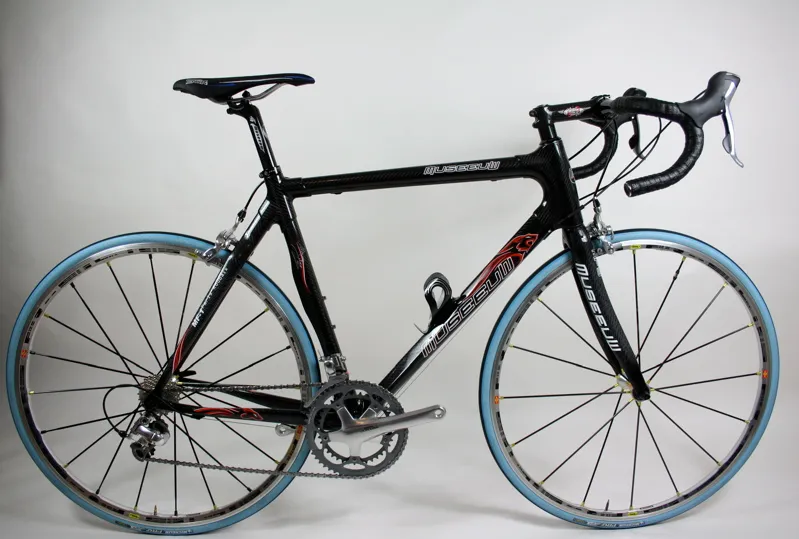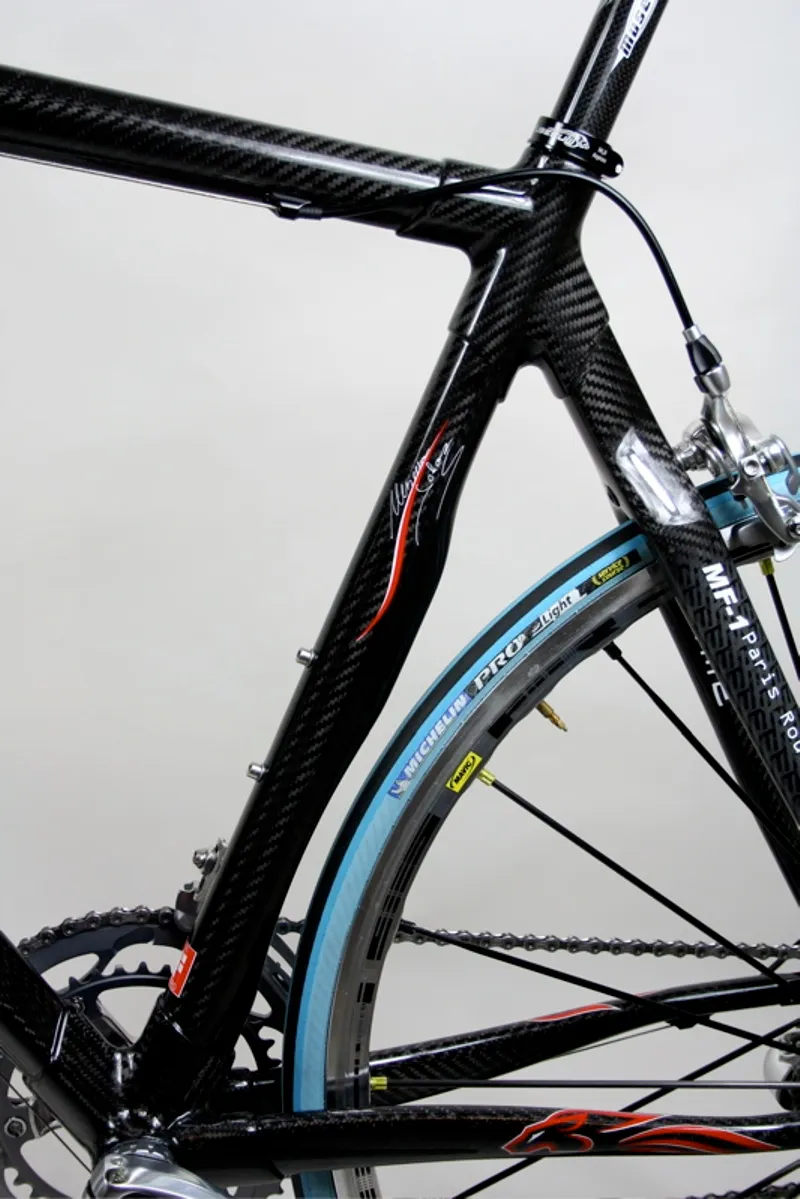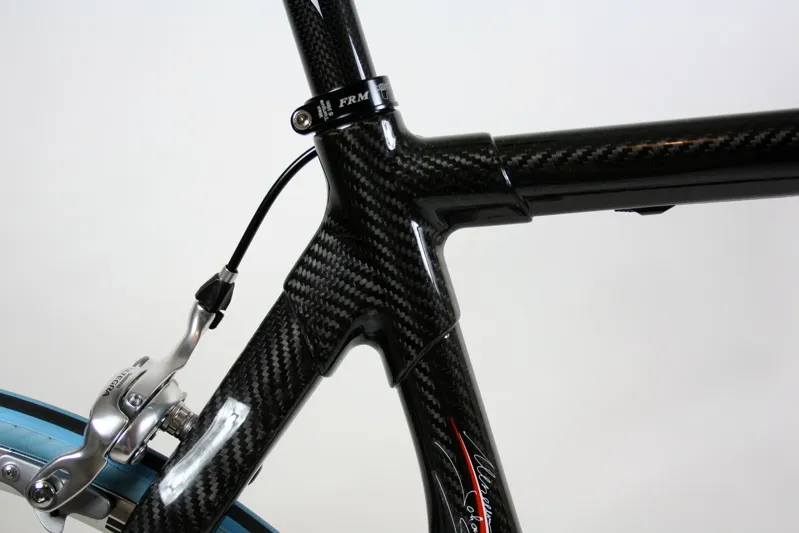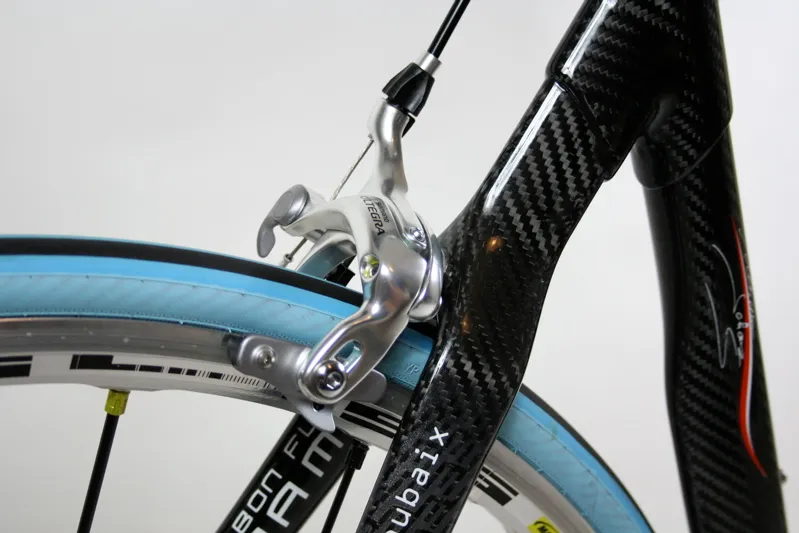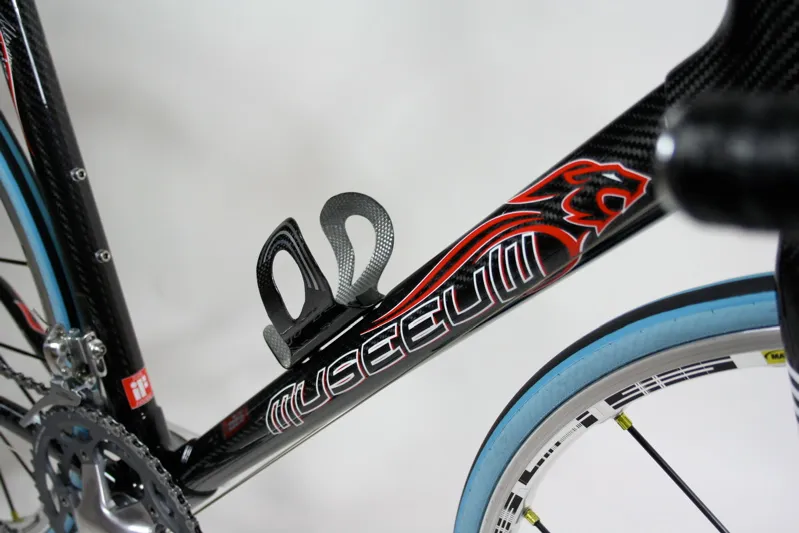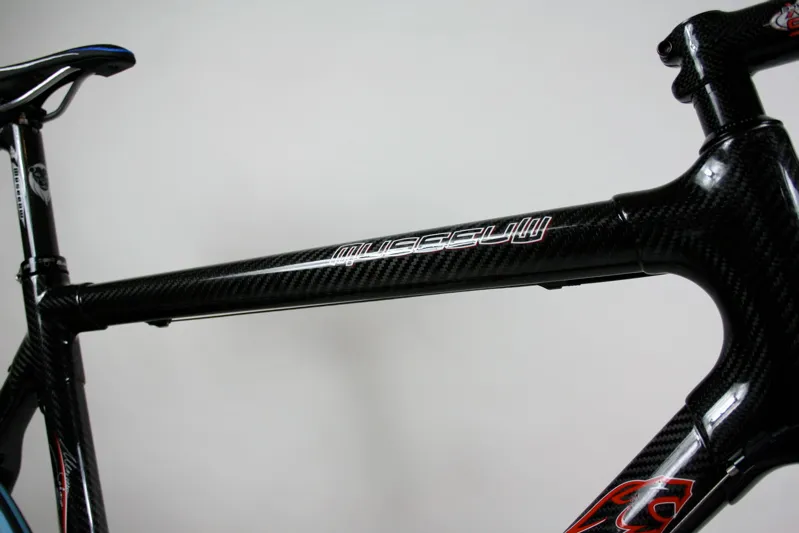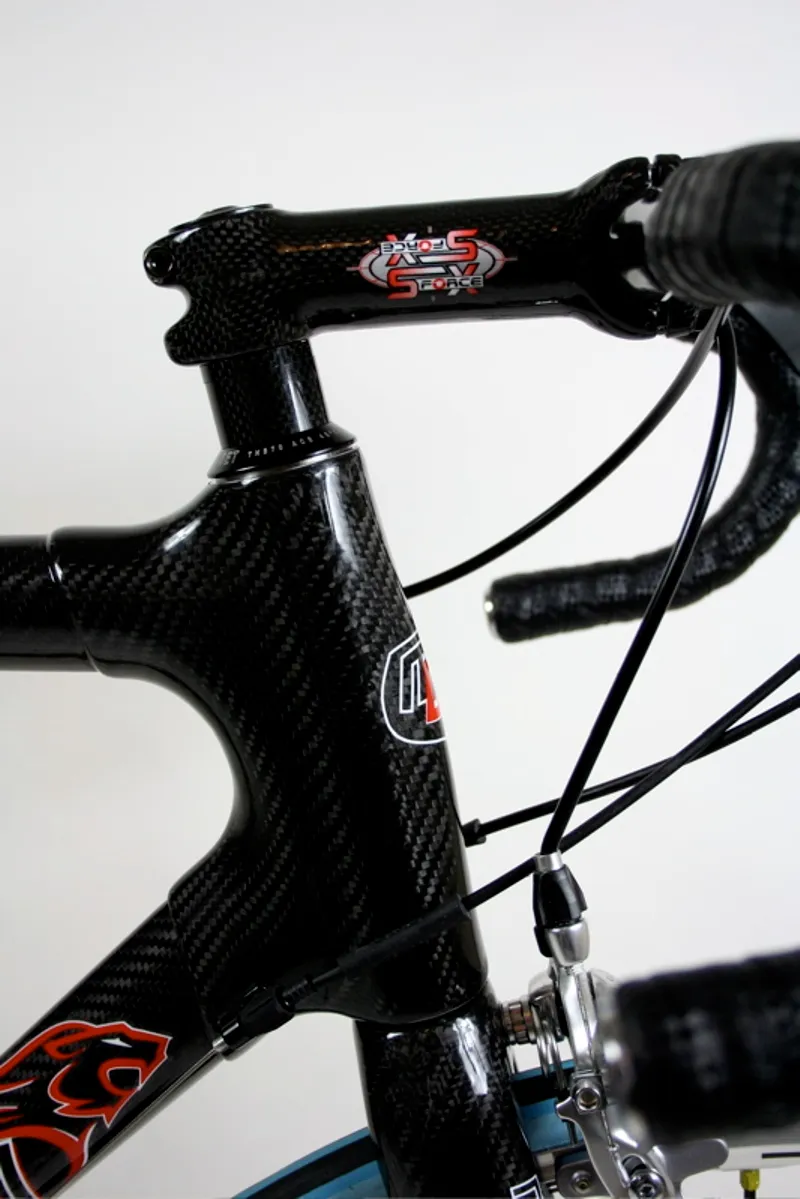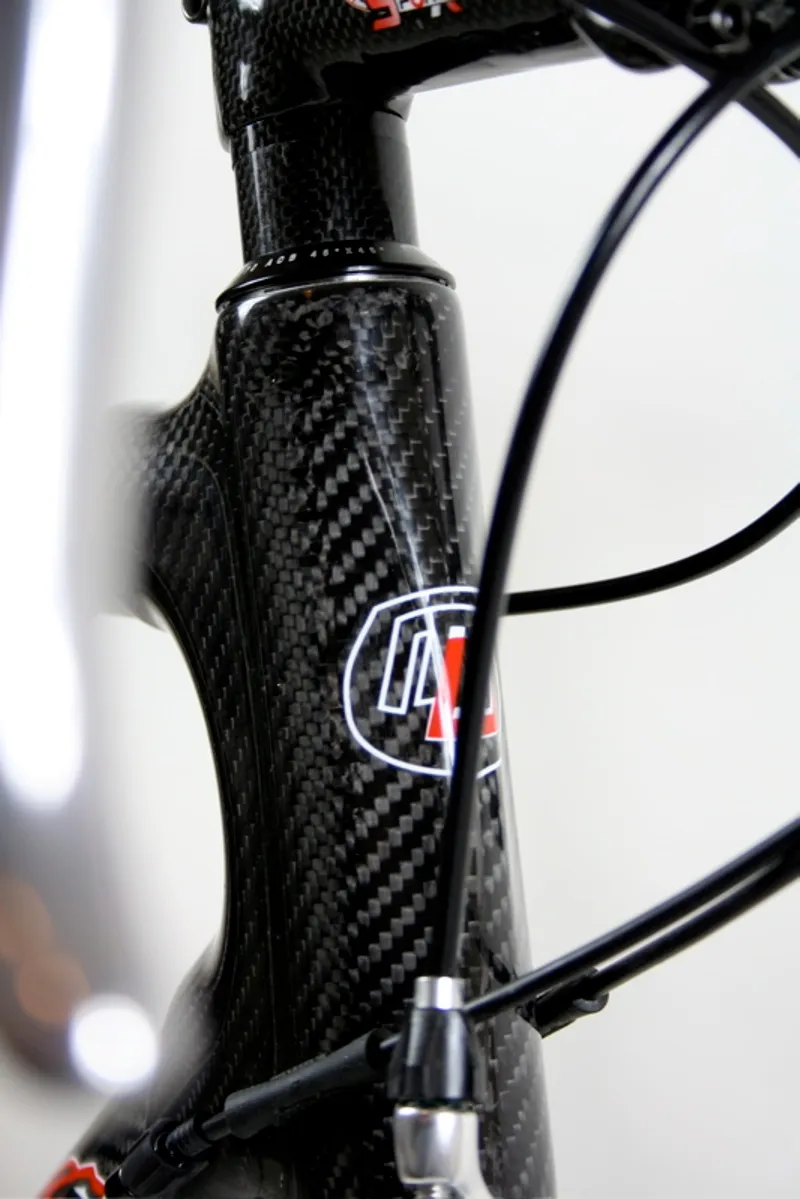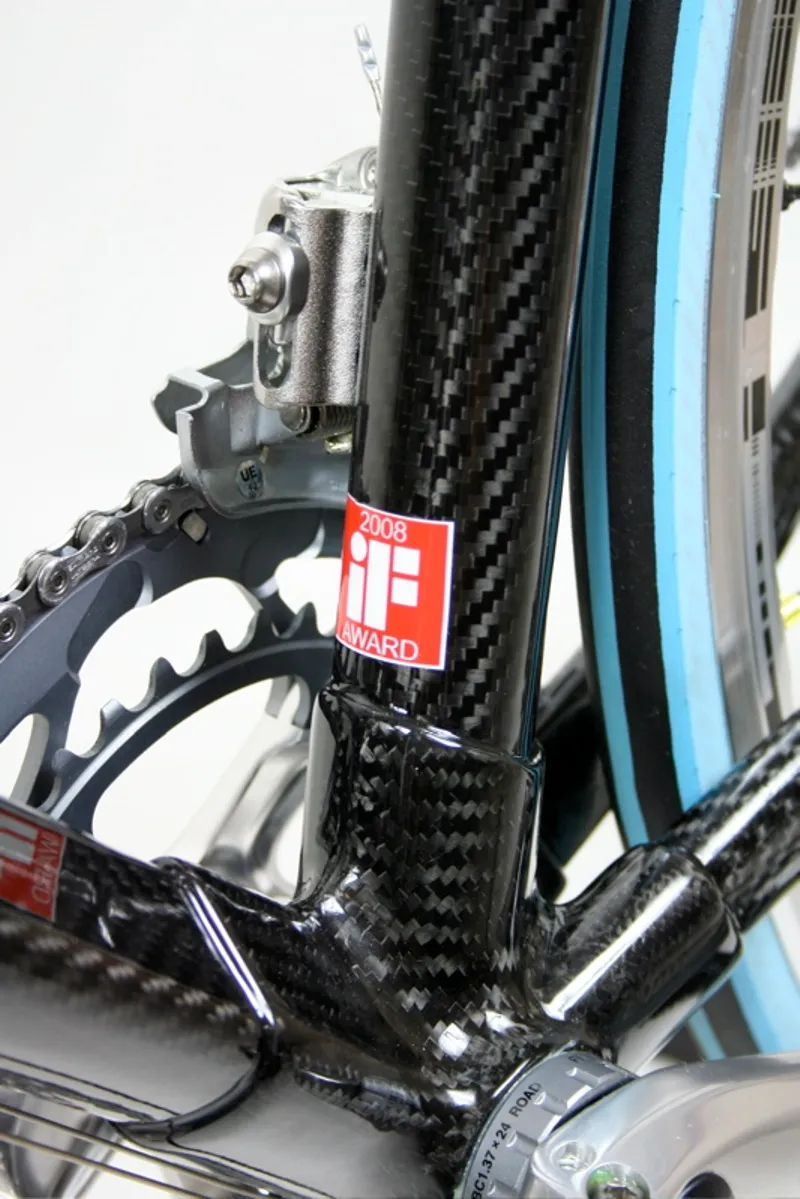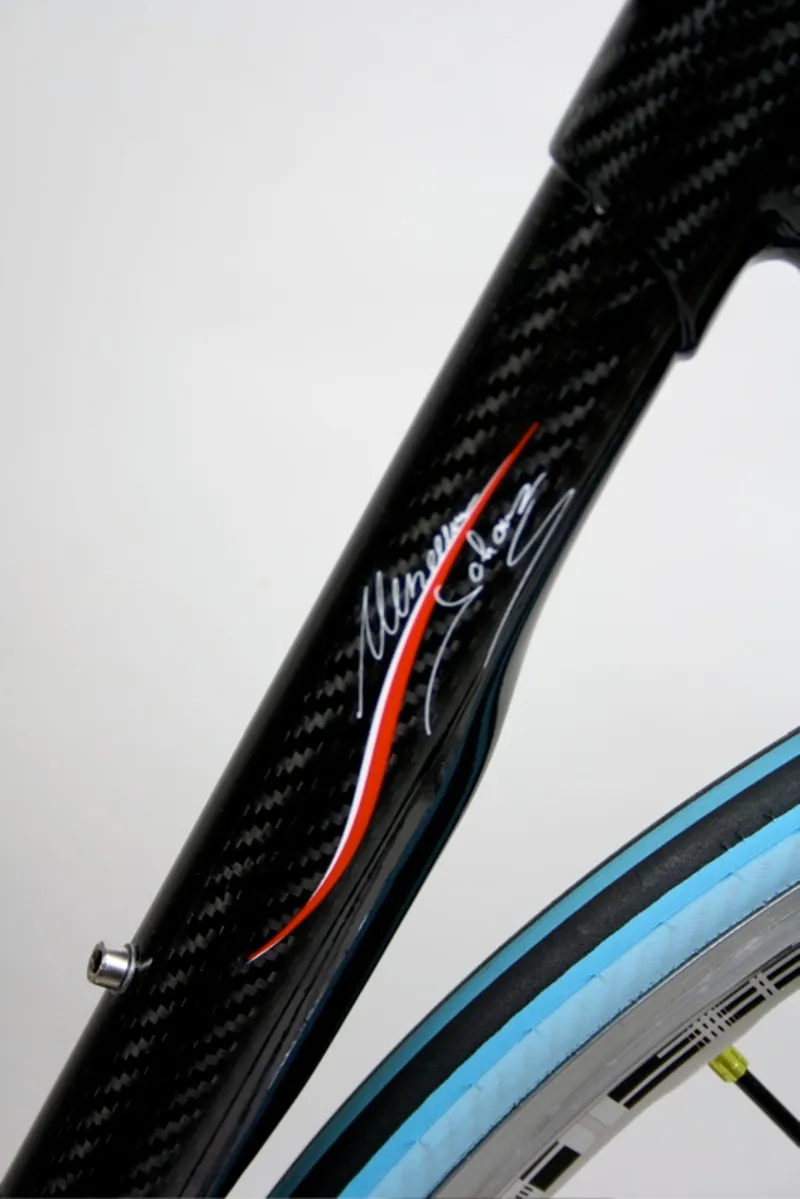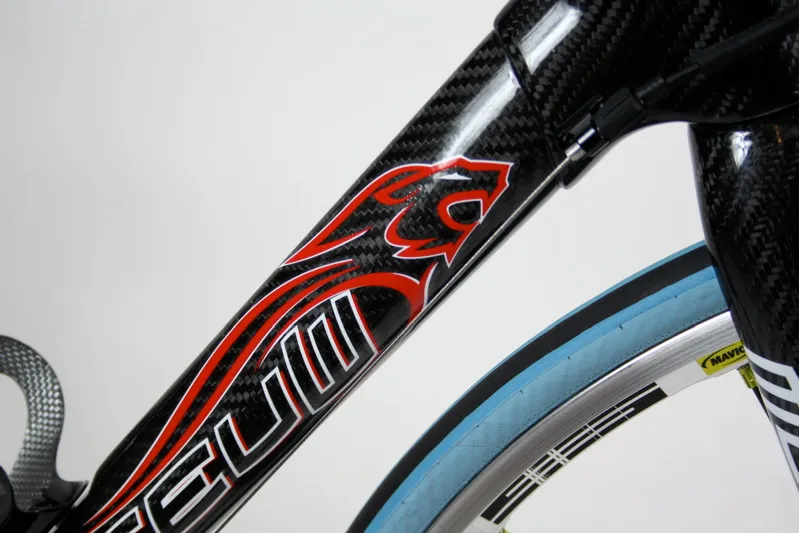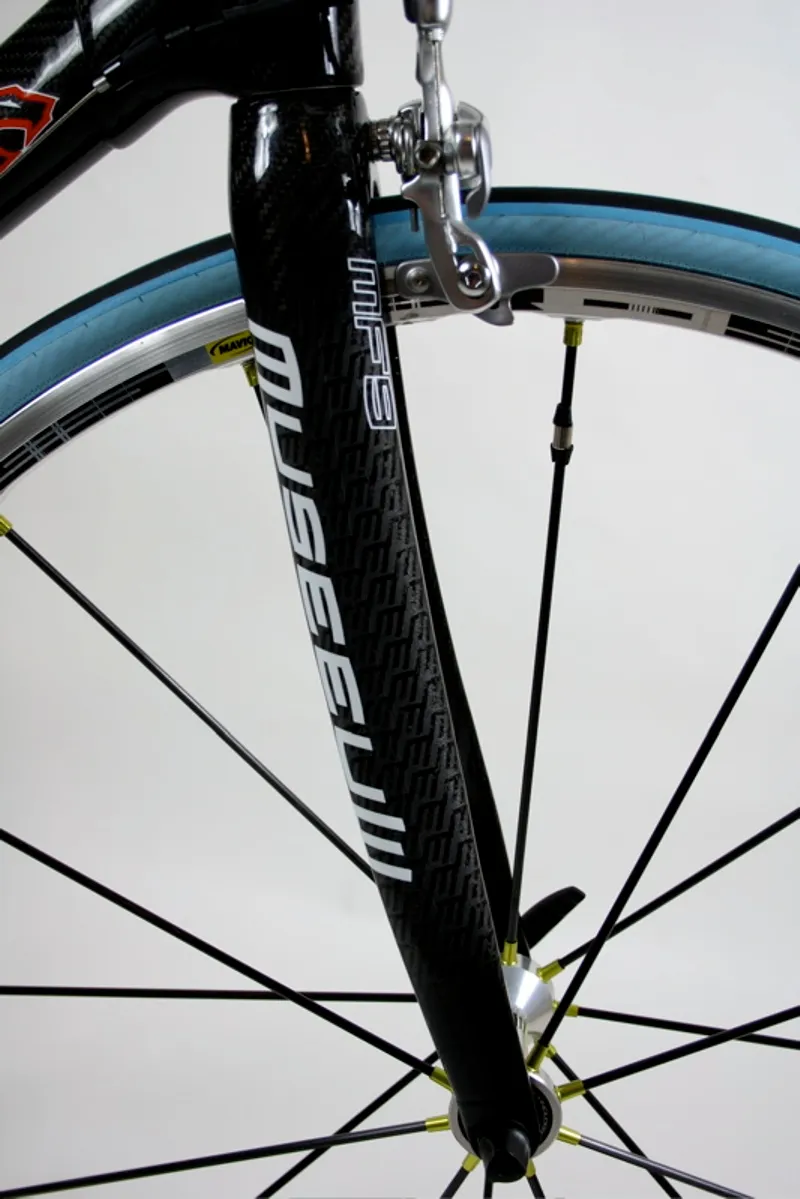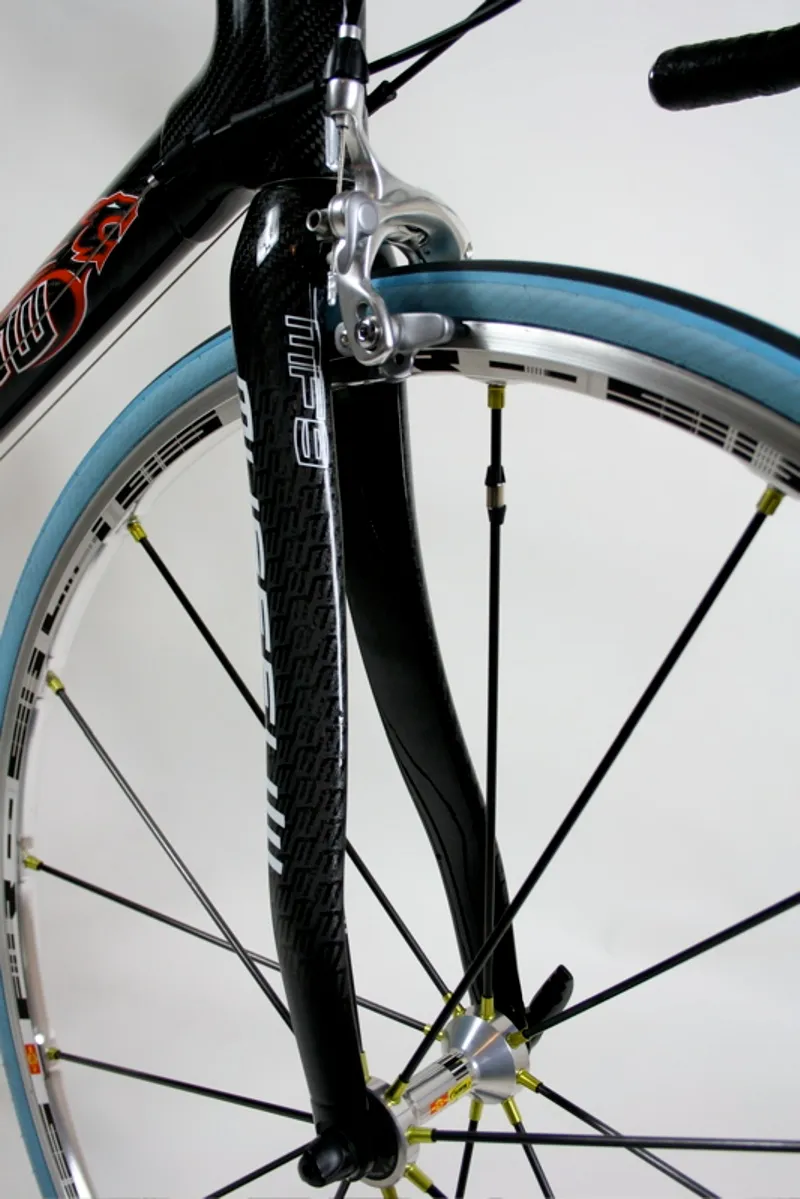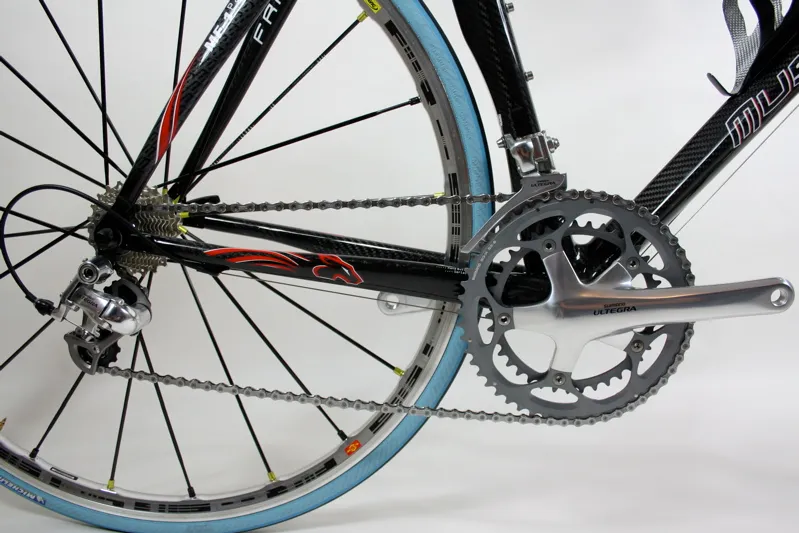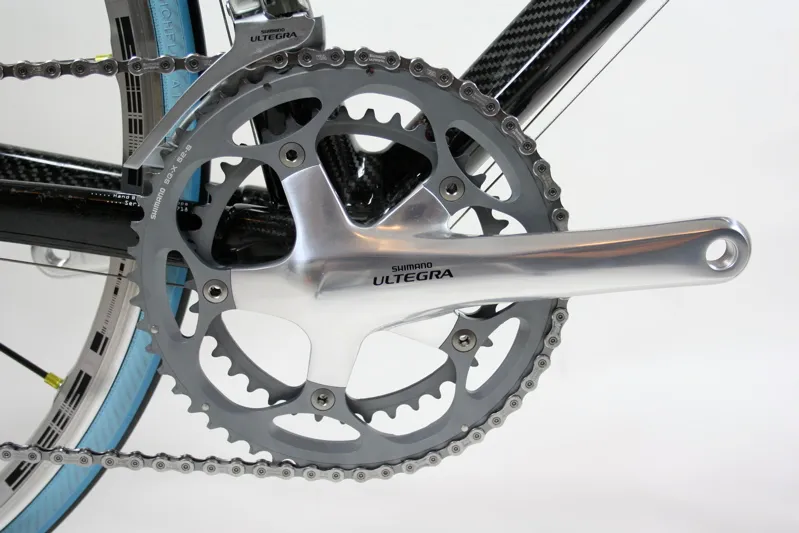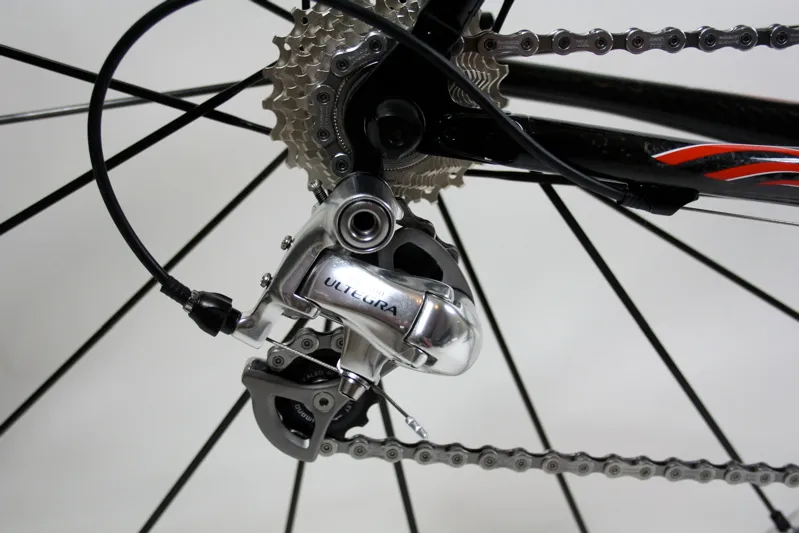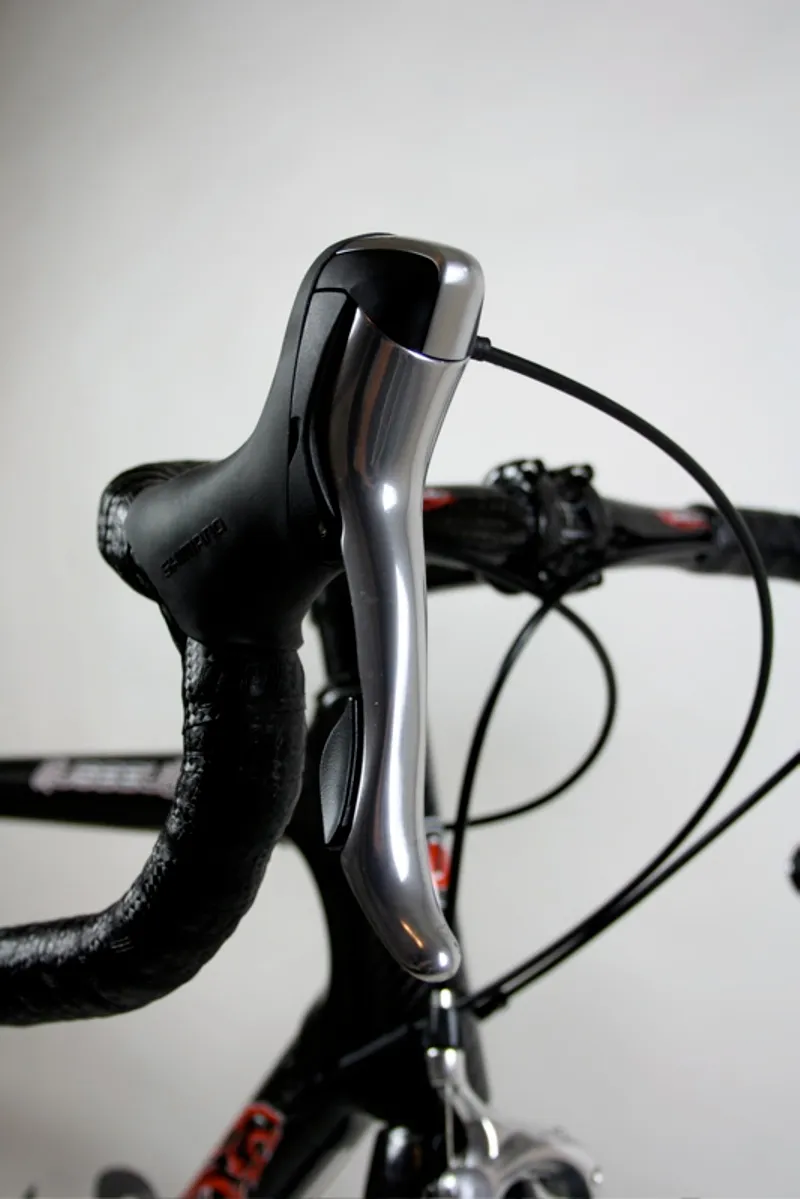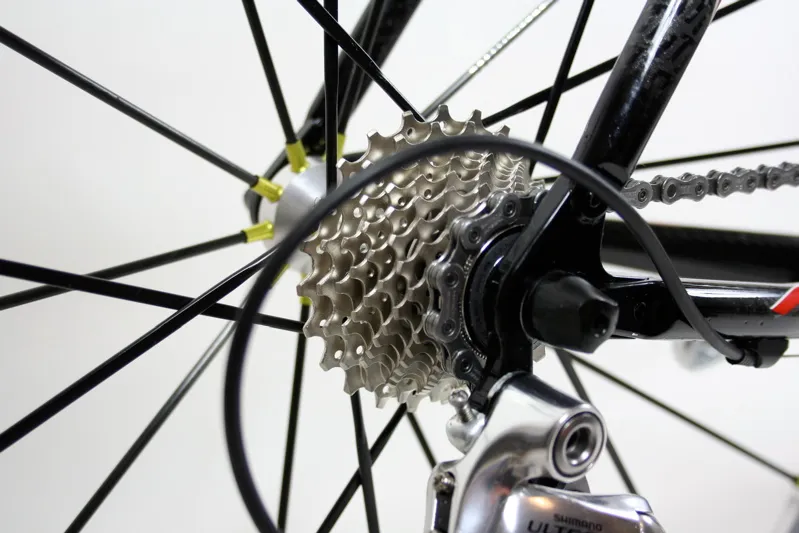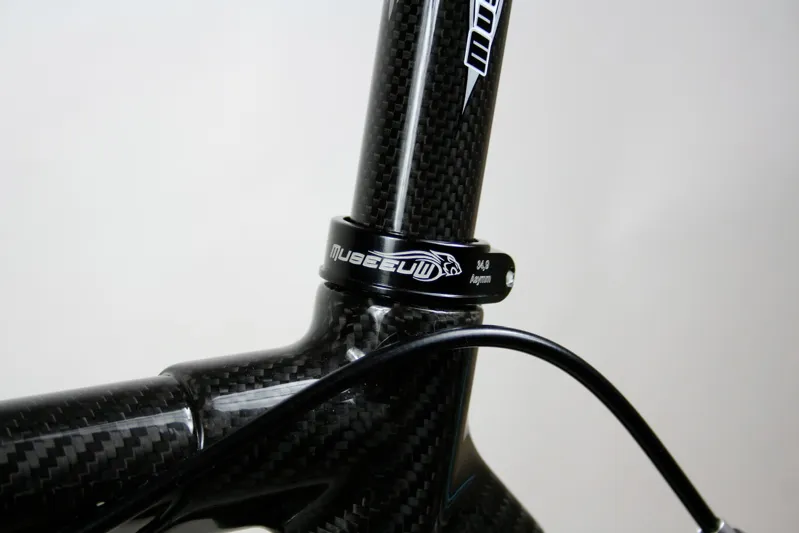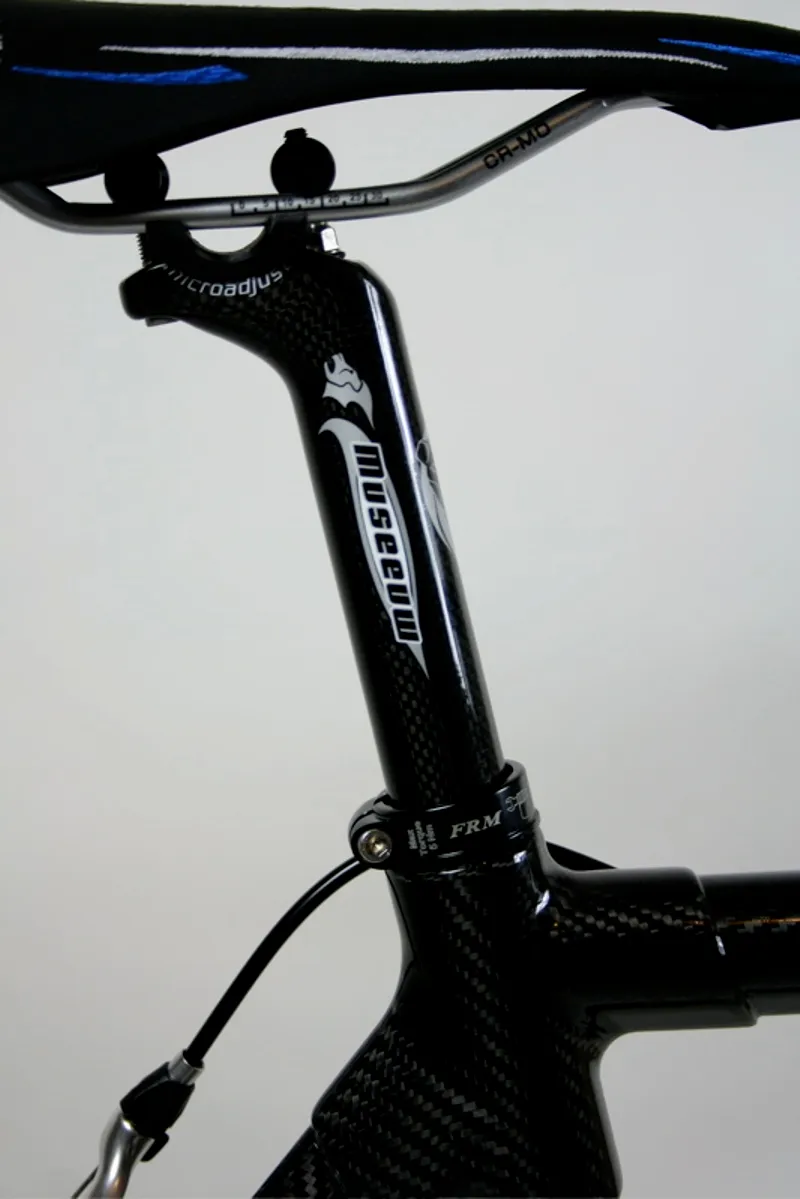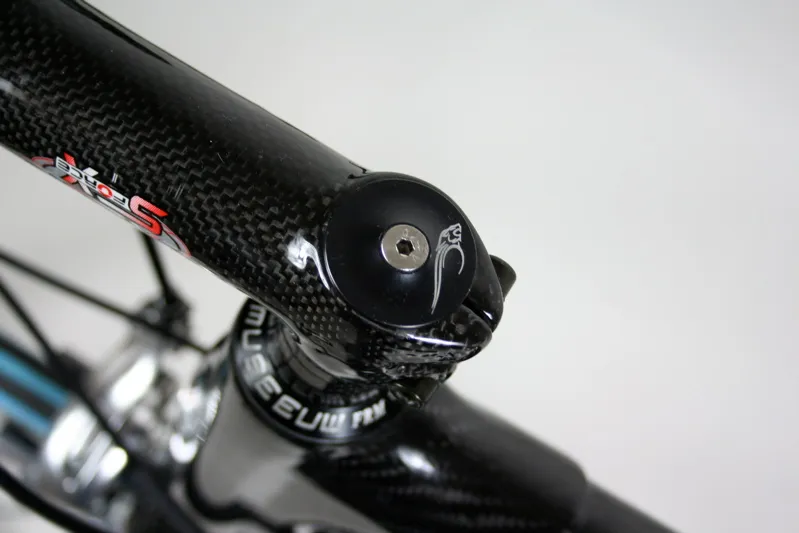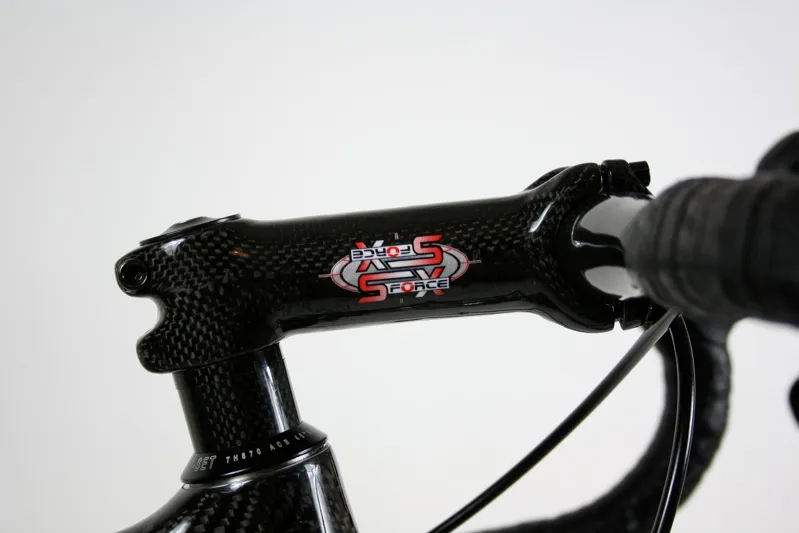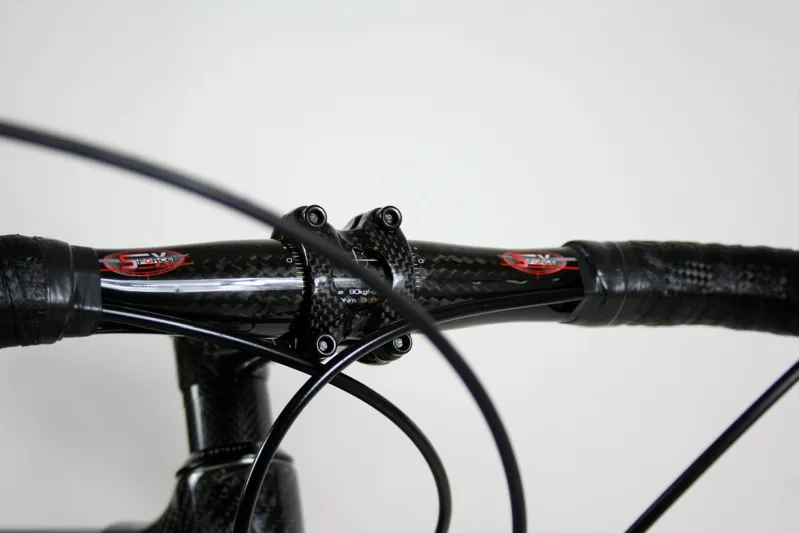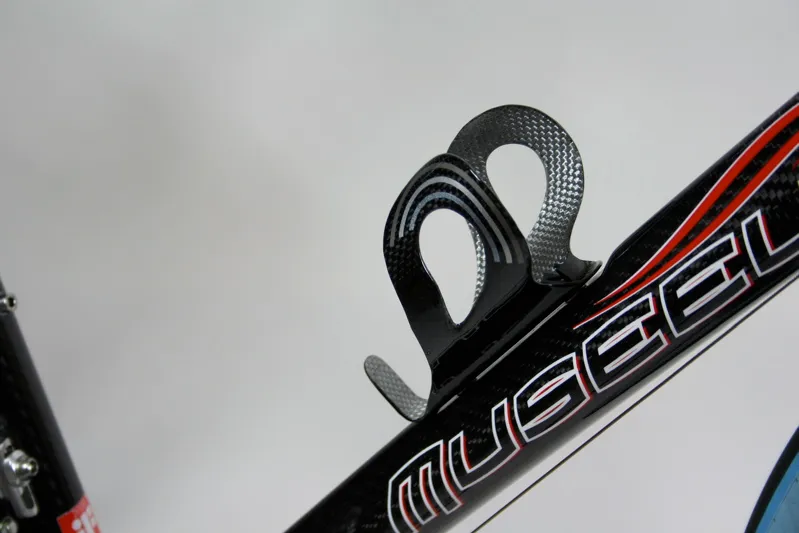Museeuw's MF-1 uses a unique carbon/flax fibre blend - yes, flax, the stuff they make linen out of. Once you get over the unconventional material, which is already in use in the automotive industry, it is quite simply one of the best frames we’ve tested in quite a while.
Johan Museeuw set up his frame building company not long after he hung up his racing wheels in 2004. With three victories each in the Ronde van Vlaanderen and Paris-Roubaix plus a World Championship win in 1996, he knows cobbles better than nearly anyone and is uniquely suited to build bikes that can tackle them.
The use of flax fibre, which behaves much like carbon fibre but is better at absorbing vibration without flexing or deforming, means it should be possible to build a frame that is as stiff but still comfortable, especially on rougher surfaces. And this proves to be the case. The MF-1 is a super-stiff frame yet also one of the most comfortable we've tested, with race bike handling and feel to boot. Despite a slightly disappointing component setup for our test, it managed to shine through and perform outstandingly.
Though the price tag is steep (£2,999/US$6,500 for frame, fork and seatpost), the performance is undeniable and the cost brings with it a certain level of exclusivity as well as the kudos of the name of the greatest classics rider of his generation.
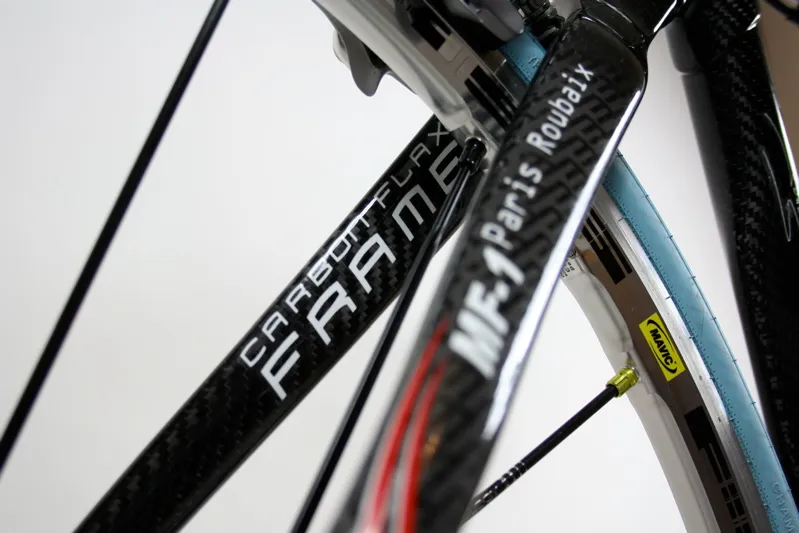
Ride & handling: stiff and responsive, with a bump-smoothing backbone
On long and short rides alike, the MF-1 proved to be on a par with some of the best race frames we’ve experienced, with snappy reflexes, capable handling and a solid chassis. As is usually the case with higher-end rigid machines, there was little wasted energy on sprints and climbs, and virtually no discernable lateral flex.
However, there was no discernible vertical flex, either, and at no point was there any indication that the rear end was at all soft or forgiving. By conventional wisdom the MF-1 ought to be a harsh ride as a result but it just … isn’t. We intentionally hit some of the roughest roads we could find (and literally ‘hit’ a wide variety of obstacles – sorry, Johan), and despite being rigid and responsive at all times, the MF-1’s comfort levels were uncannily and exceptionally high.
This was an obvious bonus on shorter rides but the energy savings from the smoother ride could really be felt towards the end of longer excursions as our legs – and the rest of our bodies – felt noticeably fresher than on some full-on race rigs we’ve sampled in the past. The fact that this damping was provided by the frame’s fibres rather than any built-in tube flex also meant the MF-1 could be relied upon to lay that saved energy down on the road on that final climb or sprint.
Comfort-oriented frames made of more ‘conventional’ materials (steel, titanium, aluminium and carbon) tend to carry with them a certain amount of noticeable vertical compliance. The sensation is akin to suspension but can sometimes make a frame feel dead and unresponsive. The MF-1, on the other hand, never feels like it’s damped at all and that's the strange thing about it - you're on a stiff, responsive carbon bike (though probably not as stiff as something like a Scott or any one of a number of German brands), but one that doesn't kill you and never lets on about its bump-smoothing backbone.

Chassis: carbon/flax mix adds comfort
The MF-1 sits at the top of a three-model range and uses an aggressive 50/50 blend of high modulus carbon and flax fibres for the main tubes and included MF-9 fork. Carbon was used exclusively for the stays and lugs on our ’08 test bike but the seatstays have since been upgraded to a whopping 65 percent flax blend for ’09 while the flax content in the fork has dropped a bit to 42 percent.
Tube profiles have been shaped to make the whole package as stiff as possible in every direction. Since Museeuw is relying on the flax fibre’s inherent characteristics – not the tube shapes – to provide rider comfort, little has been done to build vertical compliance into the geometry.
To this end, the oversize down tube has a teardrop profile at the head tube and changes to a diamond profile where it meets the large bottom bracket lug. The top tube also has a teardrop profile – with its wider side to the top – but maintains it all the way back to the seat tube. While it tapers slightly, it never becomes as slim as some frames, where top tubes are deliberately flat or narrow to allow for slight flexing to absorb vibrations.
Both the seatstays and fork have a slight hourglass shape – often used for softening bumps in the road – but this is the only concession to anything other than stiffness in the entire package. To all appearances this ought to be a firm and unforgiving ride.
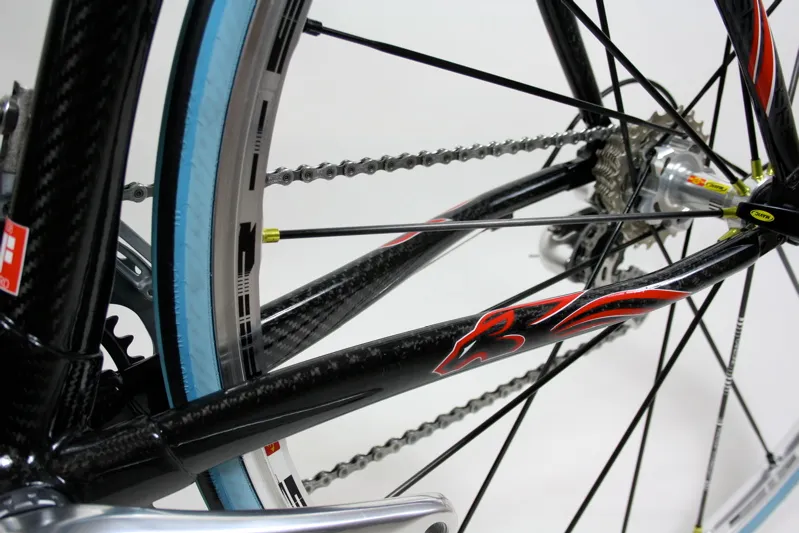
Equipment: frame deserves better
Our test bike was built up with a complete Shimano Ultegra groupset including a standard 53/39T chainset paired with an 11-23T cassette. At the time Museeuw sent us the bike they were still in negotiations with a wheel supplier – as well as developing their own carbon/flax hoops – so, unfortunately, it came without. We attached our reference set of Mavic R-SYS wheels, which we would have used for a large part of the test anyway.
The finishing kit was mostly provided by Belgian relative newcomer SX-Force whose badging appeared on the carbon bars and stem, saddle and single bottle cage. The whole package came through at a not-particularly-flighty-but-not-too-bad-either 7.56kg (16.7lb) without pedals.
As we’ve come to expect, the Ultegra parts offered a near-Dura-Ace experience in terms of function and feel, with spot-on braking and shifting that stayed consistent throughout the test period. Even so, Shimano’s second-tier package accounted for 300g over Dura-Ace (and more over some others), which was almost half the pre-pedal weight that the bike had over the UCI’s minimum limit.
Likewise, we had no cause to complain about any of the SX-Force bits but the no-frills appearance and rather generic feel were a little on the utilitarian side for our tastes and we couldn’t help but wonder about their relatively unproven reliability record. While all of the included componentry worked well enough, the exceptional frame somehow deserved better.

